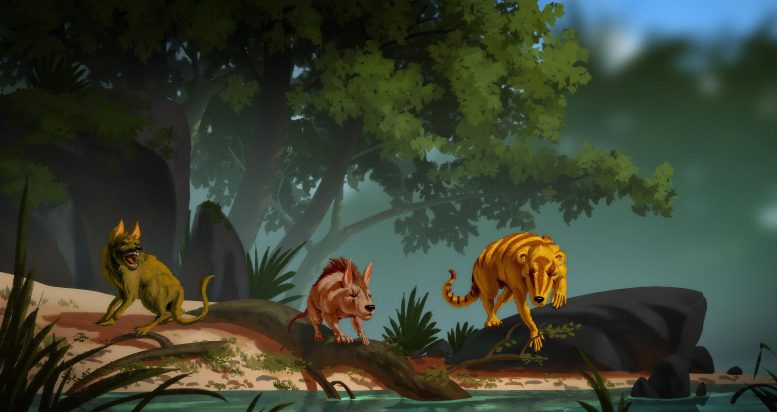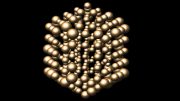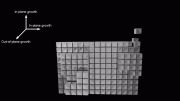Research published today in the peer-reviewed Journal of Systematic Palaeontology describes the discovery of three new species of ancient creatures from the dawn of modern mammals, and hints at rapid evolution immediately after the mass extinction of the dinosaurs.
These prehistoric mammals roamed North America during the earliest Paleocene Epoch, within just a few hundred thousand years of the Cretaceous-Paleogene boundary that wiped out the dinosaurs. Their discovery suggests mammals diversified more rapidly after the mass extinction than previously thought.
New-to-science, the creatures discovered are Miniconus jeanninae, Conacodon hettingeri, and Beornus honeyi. They differ in size – ranging up to a modern house cat, which is much larger than the mostly mouse to rat-sized mammals that lived before it alongside the dinosaurs in North America.
Each have a suite of unique dental features that differ from each other.
Beornus honeyi, in particular has been named in homage to The Hobbit character Beorn, due to the appearance of the inflated (puffy) molars (cheek teeth).
The new group belong to a diverse collection of placental mammals called archaic ungulates (or condylarths), primitive ancestors of today’s hoofed mammals (eg, horses, elephants, cows, hippos).
Paleontologists from the University of Colorado in Boulder unearthed parts of lower jaw bones and teeth – which provide insights into the animals’ identity, lifestyle and body size.
The three new species belong to the family Periptychidae that are distinguished from other ‘condylarths’ by their teeth, which have swollen premolars and unusual vertical enamel ridges. Researchers believe that they may have been omnivores because they evolved teeth that would have allowed them to grind up plants as well as meat, however this does not rule out them being exclusively herbivores.
The mass extinction that wiped out the non-avian dinosaurs 66 million years ago is generally acknowledged as the start of the ‘Age of Mammals’ because several types of mammal appeared for the first time immediately afterwards.
As lead author Madelaine Atteberry from the University of Colorado Geological Sciences Department in the USA explains, “When the dinosaurs went extinct, access to different foods and environments enabled mammals to flourish and diversify rapidly in their tooth anatomy and evolve larger body size. They clearly took advantage of this opportunity, as we can see from the radiation of new mammal species that took place in a relatively short amount of time following the mass extinction.”
Atteberry and co-author Jaelyn Eberle, a curator in the Museum of Natural History and Professor of Geological Sciences at the University of Colorado, studied the teeth and lower jaw bones of 29 fossil ‘condylarth’ species to determine the anatomical differences between the species, and used phylogenetic techniques to understand how the species are related to each other and to other early Paleocene ‘condylarths’ in the western United States.
The evidence supports the discovery of these three new species to science.
About the size of a marmot or house cat, Beornus honeyi was the largest; Conacodon hettingeri is similar to other species of Conacodon, but differs in the morphology of its last molar, while Miniconus jeanninae is similar in size to other small, earliest Paleocene ‘condylarths’, but is distinguished by a tiny cusp on its molars called a parastylid.
“Previous studies suggest that in the first few hundred thousand years after the dinosaur extinction (what is known in North America as the early Puercan) there was relatively low mammal species diversity across the Western Interior of North America, but the discovery of three new species in the Great Divide Basin suggests rapid diversification following the extinction,” says Atteberry. “These new periptychid ‘condylarths’ make up just a small percentage of the more than 420 mammalian fossils uncovered at this site. We haven’t yet fully captured the extent of mammalian diversity in the earliest Paleocene, and predict that several more new species will be described.”
Reference: “New earliest Paleocene (Puercan) periptychid ‘condylarths’ from the Great Divide Basin, Wyoming, USA” by Madelaine R. Atteberry and Jaelyn J. Eberle, 17 August 2021, Journal of Systematic Palaeontology.
DOI: 10.1080/14772019.2021.1924301










🔴 The Molecular Impasse of Evolution
🔵 The Miracle in the Cell and the End of Evolution
https://goo.gl/fmEc63
Dinosaur extinction never happen spinosauridae is still alive .modern crocodilian is the successer of spinosauridae the greatest dinosaur ever they are same animal which make gator a dinosaur gator is no bird .dinosaur and mammal is still fighting which won have better system they are million of modern crocodilian so dinosaur is very successfull they do not have many species today as mammal the great mammal predator the cat looks the same just like great reptile predator modern crocodilian because there feature are top of the game but history show us evolution does not stop .badit scientist it’s over crocodilian evidence that it’s a dinosaur all over the internet but there is no hype but evidence is evidence that how science works .spinosauridae is a mesoeucrocodylia the first mesoeucrocodylia I see no different from it from other mesoeucrocodylia .dinosaur has very short snout so do gator type land mesoeucrocodylia because most dinosaur are land animal when gator type mesoeucrocodylia goes back to land fully there snout are short some are very short .spinosauridae could not short there skull like gator type mesoeucrocodylia they do not have re in forcement like the gator if they do skull become weak nature is for the strong most of the time .that reason why spinosauridae is not alive any more they could not live in different places in life you have to find the right balance so spinosauridae evolve into a better dinosaur the gator and dinosaur live on .mammal like reptile fail because they did not developed full palate like t.rex spinosauridae gator mammal .after mesoeucrocodylia mammal develope the full palate they rapid diversified early mesoeucrocodylia was very diverse tooth evolution was very simular to mammal they were whale mesoeucrocodylia but no flying mesoeucrocodylia plant eating mesoeucrocodylia were very simular to mammals the early mesoeucrocodylia was very successfull they made to human time human kill them .advance eusuchian mesoeucrocodylia had hard time getting rid of them.the palate science, scientist have point out mammal mesoeucrocodylia have simular evolution because full palate because of stronger skull they both have 6 bone fuse to the braincase the re in forcement .spinosauridae like other primitive dinosaur only have 2 fuse to the braincase only gator type mesoeucrocodylia have 4 to 6 .4 is very rare only one fossil a new fossil one protosuchus type had 3 a none tetanuran dinosaur the 3 finger dinosaur .gator evolve other 2 finger but not 2 claws.gator and theropod both are bipedal gator do have open hip socket one dinosaur I saw quadrupedal dinosaur hip socket was close so close hip socket does not stop you from becoming a dinosaur there is science report from 80s say they are bipedal I saw video on YouTube they are doing bipedal mostly gharial even saw won raise its tail because of pressure like dinosaur I am shore it was Nile crocodile gator allso has human ankle..we know spinosauridae jaw was like modern crocodilian to swallow large prey other dinosaur is not like that . Spinosauridae neck also design swallow large prey that why lack s neck .Nile crocodile teeth is heterodont small teeth is to hold big teeth is to crush bone just like spinosaurus these teeth is not design kill fish is to kill large prey this was known long time ago now cliam only eat fish it allso has fuse nasal which Nile crocodile does not have it’s a land feature design for prey animal with legs fish does not have legs fuse nasal is feature show the different baryonyx from spinosaurus .Nile crocodile teeth is different shape some modern crocodile it’s blunt the extreme heterodont teeth like dinosaur .there is photo Nile crocodile heterodont teeth .spinosauridae is number 1 ancestor for modern crocodilian the cliam it’s convergent it’s number 1 no other animal in the fossil record have have those feature .it’s number 1.spinosaurus super small legs no science support that it is against it very strongly against it a fact but see it in media it’s against crocodilian evolution and bird evolution . spinosaurus legs is same as baryonyx